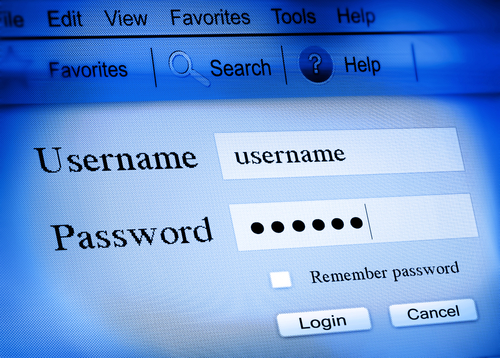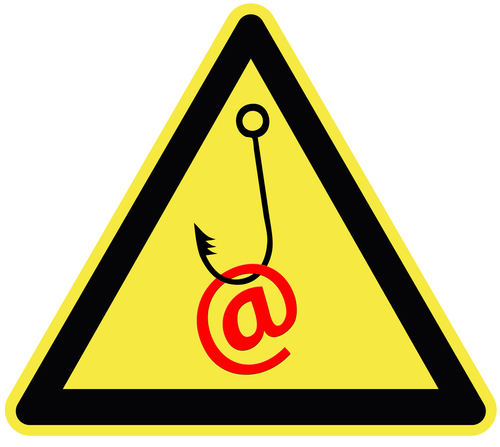October 25th, 2013

Security vulnerabilities for wireless routers are extremely dangerous. For a typical user, it’s difficult to diagnose when your router has been hacked. Making matters worse is that many users don’t know how to update with new security patches, or don’t understand the risk of not having regularly updated firmware.
As Lucian Constantin, of ComputerWorld reports, these problems were clearly illustrated recently when a security researcher uncovered flaws in the security of some Netgear routers. The WNDR3700v4 model of Netgear’s N600 Dual-Band Gigabit Router let’s hackers bypass authentication when using the web based interface. When remote administration is turned on, the router’s settings and the user’s activity can be changed and monitored from anywhere.
There are numerous possibilities for criminals exploiting this security flaw. Traffic running through the router could be re-routed to malicious websites, internal network services could be exposed, and data transmitted through the router can be monitored and stolen.
Netgear faced a similar problem in July when the same vulnerability was discovered in the firmware of another model. They quickly released a patch, but have apparently failed to check other routers for the security flaw. Many users have also failed to take notice as one report notes about 73-percent of users with the vulnerable router have failed to update.
One security expert warns to never voluntarily turn on remote administration for any device. Not only does it expose you to the possibility of attacks, but it often contains bugs.
In order to protect your router, even if you aren’t using this particular Netgear model, is to use WPA2 protection and restrict access with a strong, unique password. Also, stay up to date with updates released by the manufacturer of your router.
For help improving the cyber security for any of your devices, at your home or business, call Geek Rescue at 918-369-4335.
October 24th, 2013

Whether or not you’ve ever heard of vBulletin, you’ve likely visited a site that uses it. The software is designed for internet forums and distributed by Internet Brands Inc. As Brian Krebs reports on his security blog, a recent announcement from Internet Brands warned vBulletin users to the directories “/install” and “/core/install” from sites using the 4.x and 5.x versions of the software. This would close a security flaw. Unfortunately, 35-thousand sites failed to comply and were hacked via this vulnerability.
For sites that failed to remove the directories, hackers were able to easily find vulnerable forums and add malicious administrator accounts. Once they have administrator access to a site, a criminal has a number of harmful options.
A spokesman for vBulletin claims the 4.2.2 version of the software fixes the problem, as does the upcoming 5.1.0 version. However, he recommends always removing the install folder regardless of what version of the software is in use.
For those sites currently running versions 4.x or 5.x, it would be wise to check for two things. First, check to see if you removed the directories that cause the security vulnerability. Then, check on the administrator accounts on your site. Make sure there isn’t an additional account that’s been added maliciously.
Geek Rescue handles security for websites, networks and all kinds of devices. To get rid of existing malware, or to improve security to keep you safe from it, call Geek Rescue at 918-369-4335.
October 23rd, 2013

The Bring Your Own Device trend is unavoidable. Because of the growing trend, cyber criminals are targeting mobile devices more. It’s more important than ever to properly secure smartphones and tablets since they’re now being used to access company data and valuable information.
Limiting the access each employee has is an important step to keeping your business from suffering a catastrophic data breach. As Laird Harrison, of Tech Page One, writes, there are also some device specifications that can be enabled to greatly impact security.
It’s shocking how many tablets and smartphones have no security on their lock screen. Considering how many hacking stories start with a device being lost or stolen, it’s a must to require a password to unlock. The use of Apple’s new biometric recognition is another good step.
When your device is dormant for an extended period of time, the screen should turn off and require a password to continue using it. This is called inactive time-out. Not only will it help to improve battery life, but it also makes the device harder to hack since it erases the possibility that a thief could find the device and use it without knowing the password.
By adding programs and enabling some options, you’ll be able to remotely view the data stored on a lost device. You’ll even be able to disable some applications and erase data that could be harmful in the wrong hands.
It’s a good idea to encrypt all data stored on mobile devices, but at the very least, encrypt company related information. There are a number of programs available that will effectively encrypt the most vital data on your device.
These are just a few options mobile users can enable on their device to make them more secure. If you’re using a personal device to store or interact with company data, these are certainly necessary precautions. Even if you’re only using your device for personal use, these are still good ideas.
For help increasing the security on any of your devices, or to recover lost data or fix a device that isn’t working right, call Geek Rescue. If it boots up or turns on, we fix it. Call us at 918-369-4335.
October 22nd, 2013

Free public WiFi is a well known danger to your device’s security. These wireless networks are unsecured, which makes it easy for hackers to intercept data being transmitted over them.
Most companies also use a wireless network for their employees, which can be just as dangerous. It’s often overlooked, but, as Sam Narisi of IT Manager Daily reports, there have been a large number of exploits due to wireless routers having backdoors and holes in their security.
Recently, D-Link wireless routers were discovered to have a vulnerability that allows a third party to change the router’s settings without needing the password.
Security firm Independent Security Evaluators released a list of 13 wireless routers that they found to contain security flaws. The routers came from trusted companies like Belkin, Netgear and Linksys and allowed hackers to intercept information, gain access to computers on the network and bypass security.
A technique called “wardriving” has been used to crack wireless networks, as well. By simply driving around and area and searching for wireless signals, hackers are able to then use software to break the network’s encryption.
Internal wireless networks are not inherently secure. There are, however, steps you can take to improve their security. Installing the latest patches and continually updating the router’s firmware is important. Replacing your hardware regularly is also necessary since older devices will stop getting patches and have flaws the newer devices don’t. Use HTTPS for administrator connections. And of course, use a long and strong password on your router.
There are a number of ways a criminal can gain access to valuable data within your company’s network. In order to improve your entire security, call Geek Rescue at 918-369-4335.
October 21st, 2013

A lot of attention has been paid to Google’s recent changes. From their Hummingbird update of their search algorithm, and encrypting searches, there’s been no shortage of headlines about the search giant’s actions. Their latest move, however, isn’t about improving their own site. Instead, it’s an attempt to improve security for smaller, at risk sites.
Lorenzo Franceschi-Bicchierai, of Mashable, reports that Google has launched ‘Project Shield’, which allows small websites to offer content through Google’s infrastructure to keep them from being taken down by Distributed Denial of Service attacks.
A DDoS attack is a cyber attack that attempts to shut down a website by overloading it with malicious traffic. The traffic is impossible to block because it originates from thousands of individual, compromised machines.
With Project Shield, Google is trying to help individually owned websites that serve a public good in so-called “high risk conflict zones”. These would include Syria, Egypt and any country where the internet is controlled by the government.
In such countries, governments have used DDoS attacks in the past to take down certain websites. One example of this is a Syrian website set up by an activist to track scud missiles. The Syrian government used a DDoS attack to knock the site offline in July.
With it’s own DDoS prevention measures and an offering to serve content through Google’s resources, Project Shield is hoping to protect these types of sites, which are usually operated by small human rights organizations without the means to protect themselves.
Google is currently accepting applications to be “trusted testers” from sites that feel they deserve Project Shield’s protection.
For businesses in the US, Google is not offering such protection, but DDoS attacks and other cyber threats remain a serious concern. To improve your company’s security, contact Geek Rescue. We offer a variety of security solutions to keep you safe from attacks. Call us at 918-369-4335.
October 17th, 2013

Nearly every day, there’s a new report about a corporation being hacked and experiencing downtime or losing account information for thousands of customers. These attacks and the subsequent fallout are incredibly costly. Debbie Cohen-Abravanel, of Seculert, reports that network security for most businesses is shockingly lacking and it allows targeted attacks to easily slip past defenses.
Spear phishing, SQL injections and cross-site scripting are fairly basic attacks that have been surprisingly successful recently. Hackers have been able to spot weaknesses in security and attack them with these basic tactics. This makes attacks much less labor intensive for criminals, which in turn makes them much more attractive.
Some suggestions for closing up potential holes in security are :
- Keep all software, not just antivirus programs, updated.
- Perform an audit on server login security.
- Regularly delete unused and unnecessary browser plug-ins.
- Enable “click-to-play” in browsers to protect from drive-by attacks.
- In Microsoft Office, disable ActiveX.
These measures won’t keep you completely secure, but they do fix common weaknesses in a company’s security. A more serious investment in security goes a long way to protecting you against attacks. Hackers are usually looking for easy exploits, so if your security is difficult to by-pass, most criminals will move on to an easier target.
For help improving the cyber security at your home or office, contact Geek Rescue.
October 17th, 2013

Passwords are a constant object of concern for security experts. We’ve used this space previously to talk about the potential weakness of passwords to protect your online accounts. Robert Lemos, of Dark Reading, reports that the habits of users creating easily guessed passwords and an upgrade in hackers’ capabilities for breaking them have made password protection increasingly weak.
When creating passwords, even seemingly strong ones that include upper and lower case letters, numbers and symbols, most users still use similar passwords so they’re more memorable. This use of mnemonics makes passwords predictable.
Hackers have tools capable of brute force password guessing. These programs guess billions of possible password combinations until they’re able to gain access to an account. Some top of the line programs can guess about 1-billion passwords per second.
When a user’s password is predictable because of recurring habits, hackers are able to make intelligent assumptions about what your password will look like. That narrows down their list of possibilities considerably, making their password guessing tools even more effective.
Add that to how many websites don’t have ample security on their customers’ passwords. There have been multiple examples over the past year of hackers stealing huge lists of passwords in one attack. This not only gives them access to those accounts, but also gives them real world examples of the types of passwords typically being used.
These brute force attacks are actually fairly rare. Most criminals won’t take the time to launch an attack against a single account. For that, they prefer to use phishing scams and social engineering to get users to send them their passwords unknowingly.
Having a secure password is still important, but it’s even more important to understand where secure passwords will do you the most good. For example, banking sites usually put the most security on their users’ passwords and they’re very rarely compromised. Using a secure password for your bank account is a given, but you want to be sure not to re-use that account on a less secure site. That’s how many bank website’s are compromised. A user will use the same password on a site that isn’t very secure, then a hacker will steal a large number of passwords from the unsecure site and use them on more secure sites.
Using a password manager is one way to enable you to use unique passwords for each account, but never have to worry about forgetting them. However, even this method is hackable.
Although it’s probably impossible to be completely secure, avoiding phishing scams and social engineering and having strong passwords in place will serve you well.
For more information about how to keep your accounts and your computer safe, contact Geek Rescue. We not only fix devices that aren’t working right, we also protect them against future attacks.
October 16th, 2013

Cloud computing has been hailed as a great innovation that changes the way we do business. It’s not without its flaws, however. There have been a number of well-publicized exploits of public cloud systems over the past few months. Tom Scearce, of Data in Motion, suggests that, while storing some files in the cloud is a great idea, there are a few types of files that aren’t worth the risk.
- Financial and Legal Information
Many businesses store tax records or bank account information in the cloud because it’s always accessible, but doesn’t take up storage space on a physical drive or server. What happens, though, when a hacker is able to access the cloud? Suddenly, your most critical documents are available to a third party. Despite the supposed advantages, storing this type of information on a public cloud is ill-advised.
Security experts advise you to create a strong, unique password for each of your online accounts. That adds up to more passwords than most can remember. Storing your password on the cloud seems like a great solution, but once again, the lack of security could give a criminal access to all of your accounts. Even LastPass, which is hailed as the industry standard password manager, has experienced exploits.
- Employee and Customer Data
Your human resources department has collected social security numbers, tax and financial information from your employees. You’ve also collected credit card numbers from customers. Where should you store all of this information? If you decide to keep it on a public cloud, you’re asking for trouble. While losing control of this data might not directly impact your business, there are liability and credibility issues at stake.
- Presentations and other Time Sensitive Files
The other concern, besides security, with the cloud is availability. One of its advantages is the ability to access and share files from anywhere with an internet connection. There are outages and downtime, however. If there’s a file you absolutely have to have at a certain time, it’s best to keep it off the cloud.
There are other options available for these and other types of files that aren’t a good fit for cloud storage. Rather than using public cloud services like Dropbox and Google Drive, consider investing in a private cloud. Not only will that improve security, but you’ll also be able to directly contact your hosting company if there’s any downtime.
Geek Rescue offers a variety of cloud based solutions. Call us to find out how cloud computing can help you do business better.
October 15th, 2013

Spam and other malicious email threats are a steadily growing problem, but some recent headlines suggest that spam email is actually on the decline. In a post on the All Spammed Up blog, the author notes that these headlines are inaccurate due to a flaw in their researching methods.
One reports claims that 68-percent of all email traffic in August was unsolicited, or spam, emails. That still looks like a daunting number, but it’s actually a decrease of more than 3-percent from previous months. These numbers aren’t wrong, but they only take into account spam emails that are caught by spam filters. As any experienced email user knows, there are still plenty of other threats that end up in their inbox.
In actuality, phishing scams went up by 10-times since August of 2012 and emails containing malicious attachments were 2.5 times higher. These threats are even more dangerous because they’re able to by-pass many spam filters and appear with trusted messages in the inbox.
Rather than email becoming safer, the true message is that spam is getting smarter. Hackers study the way typical spam filters work, then design their malicious emails to get around them. This will prompt an update to spam filters, which will be countered by a change in hackers tactics and on and on.
The other issue with claims that spam is on the decline is that it ignores spam outside of email. SMS spam sent to users’ smartphones is becoming more of a problem. Spam messages over social media like Facebook and Twitter has been a successful endeavor for hackers and is reportedly up 355-percent in the first half of 2013. These new threats don’t show that email is being forgotten by criminals, but instead shows that email is not the only target.
Spam and other malicious attacks are a profitable business so cyber criminals won’t be slowing down their efforts any time soon. For help improving the security on your computer, smartphone, tablet or other device, contact Geek Rescue.
October 10th, 2013

Phishing scams are attempts to trick users to give out personal information so hackers can then use it to break into accounts and steal their identities. Most phishing scams start with an email that directs users to a website where they’er asked for information like their phone number, physical address and even social security number or banking information. There are a number of tell-tale signs of a phishing email, which makes many people believe they could never fall for one. As Sam Narisi of IT Manager Daily reports, a recent study by the Polytechnic Institute of New York suggests otherwise.
The study consisted of 100 science and engineering students. The students were given a personality test and asked about their computer use and proficiency. The researchers then anonymously sent a phishing scam to their personal accounts. The email included the usual signs of a scam, including misspellings and other errors. Still, 17 students fell for it and willingly gave out personal information.
What this study uncovers is that everyone is at risk to become a victim of a phishing scam. Due to social engineering when developing these scams, and a carelessness by users, even the most educated individual could still be a victim.
This extends to other threats, like malware, that infect your system through careless user actions. When a user isn’t extremely cautious online, bad things happen. This is costly for users on their personal computers at home, but it’s a huge risk for businesses who have to safeguard their entire network from numerous careless users.
Education is a great place to start to protect yourself and your office. Knowing what to look for in a potential cyber threat is important, despite the results of the study. Additional security measures also need to be put in place, however, with the knowledge that, eventually, someone is going to click on the wrong link.
To improve the security on any of your devices, at home or at the office, contact Geek Rescue at 918-369-4335.




















